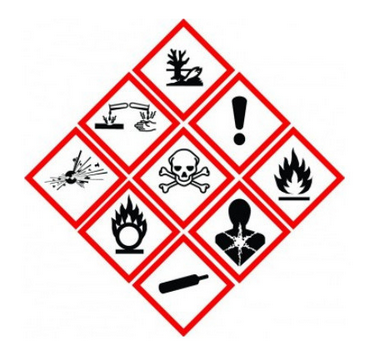
On February 9, 2021, the Ministry of Health of Chile published Decree 57/2019, the Regulation on Classification, Labeling, and Notification of Hazardous Chemicals and Mixtures, which adopts the Globally Harmonized System of Classification and Labeling of Chemicals (GHS). Chilean GHS aligns with the UN GHS (version 7) but with certain revisions.
In Decree 57/2019, notification shall be made for hazardous chemicals whose annual volume is equal to or greater than one ton. As to substances in mixtures that may pose threats to human health and the environment with a concentration higher than the limit, notification must be made. The transitional period of GHS implementation and notification for chemicals and mixtures are listed in the following table:
Substances | Mixtures | |||
GHS Implementation | Notification | GHS Implementation | Notification | |
Industrial use | February 9, 2022 | February 9, 2024 | February 9, 2025 | February 9, 2027 |
Non-industrial use | February 9, 2023 | February 9, 2025 | February 9, 2027 | February 9, 2029 |
Currently, GHS has been enforced for substances subject to industrial use and non-industrial use. Notifications for these substances will be enforced step by step in the coming years. It should be noted that there is less than one year before the end of the transitional period for substances subject to industrial use.
Under the building block principle, Chile has not introduced:
- flammable liquids-category 4;
- skin corrosion/irritation-category 3;
- serious eye damage/eye irritation-category 2A and 2B;
- inhalation hazard-category 2; and
- hazardous to the aquatic environment-acute hazard-category 2 and 3.
In accordance with Article 6 of Decree 57, the Ministry of Health published Resolution 777/2021 on its official gazette, which provides a list of 4,500 substances requiring mandatory classification. Resolution 777/2021 can be used as a reference for Chilean manufacturers or importers when making classifications of their products. The list also presents names of substances, CAS numbers, hazard classifications, special concentration limits, coefficient M and ATE value.
Product labels must contain the following information:
- product identifier;
- CAS number (if applicable);
- pictogram;
- signal word;
- hazard statement;
- precautionary statement;
- information of manufacturers (including their name, address, and telephone number); and
- its standard quantity.
Products available to the public shall provide a local emergency number (available for 24 hours). Products that are mixtures must present hazardous information. Precautionary statements shall not exceed six unless additional requirements are made.
Package size | Label |
Size < 50 militers (mL) | Hazard pictogram |
50 mL ≦ Size <125 mL | Hazard pictogram+hazard statement |
125 mL ≦ Size < 250 mL with at least two hazards | Hazard pictogram+signal word+hazard statement |
The safety data sheet (SDS) must be compiled in Spanish. Suppliers must update the SDS within six months when there are new restrictions or hazard classifications or the risk control measures have been updated. In Section 3 of the SDS, product identifiers of impurities and additives must be listed such as CAS number.
If you need any assistance or have any questions, please contact us via service@jianzaoshiwang.cn.

